Key insights
- Communities with deeply rooted citizens can often weather economic downturns and natural disasters better
- Even if you don’t feel a deep sense of attachment to your city or town at first, you can work to build roots
- To become rooted in your community, you should pursue new opportunities, embrace your town’s quirks, walk more often and tether yourself to your neighbors
Do you ever feel like you don’t quite fit in your chosen city or town? In her recent book, “This Is Where You Belong: The Art and Science of Loving Where You Live”, author Melody Warnick shares tactical ways that residents can overcome this feeling of displacement. Whether you've got the winter blues or still haven’t settled into Midwest life even on the brightest summer days, here are insights you can use to become more deeply rooted in your chosen community.
Love the one you’re with
In her book, Warnick reports that 57 percent of Americans will never leave their home state and 37 percent of Americans will never leave their hometown. While these numbers seem to be shrinking as millennials launch off to new cities after graduation, the stats are clear: most of us don’t fly far from the nest. What does this mean?
In short, those who stay — Warnick calls them Stayers — tend to be more social and more likely to contribute to their community. Movers, on the other hand, are typically less social and as a result, they feel less connected and committed to their local community.
Of course, not everyone grows up with a deep feeling of connection to their hometown. So, is it possible to either build roots in a hometown you never connected with, or to become a committed community member in a brand-new place? Warnick says yes, absolutely.
Mapping assets
Whether you’re struggling to find community in your hometown or in a brand-new city, you can follow the same steps to get integrated and attached. One first step that Warnick recommends is asset mapping. In this exercise, you begin researching your town to determine the best:
- Attractions
- Restaurants
- Coffee shops
- Walking paths
- Museums
- Stores
…and whatever else you like about your hometown. If you don’t have any, try going on Yelp to see what is highly reviewed near you, then test them out.
While some people prefer to use a paper map or a simple list, you can also create a Google Map that will be searchable by other local community members. Here’s an example Warnick created for her chosen hometown of Blacksburg, Virginia.
The act of mapping assets can be quite simple and personal — perhaps you will use it as a personal list to help you get out of the house each weekend. But it can also help you to build up your community by creating connections between you, other community members, and the businesses you will come to love.
Try the one-mile solution
Warnick also suggests we get out of our cars and walk more often. One of her challenges is the one-mile solution, which is where you replace one car trip per week with a biking or walking errand.
To begin, enter your address into Walk Score to see what shops, restaurants or parks are within a one-mile radius of your home. Then, challenge yourself to bike or walk to these destinations whenever possible. Remember, even in the middle of winter, a quick walk is one of the best ways to boost your mood.
If you live in an outer-ring suburb or rural area without anything in a one-mile radius, you can also drive to your shopping district or downtown area and try the walking challenge there. Park in a central area and walk to each store or errand, rather than driving location-to-location.
While many environmentalists champion the one-mile solution as a great way to minimize environmental impact, Warnick says it’s also a great way to build your sense of community. You’re more likely to run into people you know when you are out walking or biking than when drive. You’ll also notice small things, like a neighbor’s beautiful rose garden or a local restaurant’s funny sidewalk advertisements. All these little things can help you feel like you understand and appreciate your local community.
Add value to your community
The point of exploring and embracing your community is that you will hopefully find people or businesses that reinforce your beliefs, values and identity. But what if, even after asset-mapping and walking in your community, you still feel like a fish out of water?
Warnick shares a story where her young daughter asked why their new hometown didn’t have a sidewalk chalk art festival — a favorite annual event from their previous community. Warnick realized that she had an opportunity to bring her daughter’s favorite event to life in a new area, while also delighting her new, fellow community members. Rather than waiting for someone to make it happen, she did it herself.
Whether it’s a large event like a sandcastle contest, a book fair, a luminary loppet or a smaller fête like a neighborhood garage sale, look around to see what your community is missing. Set to work contacting local movers and shakers who will support your vision and help draw attention to it.
Settling in
There are so many ways to become a valued and committed member of your community, and these are just a few starter tips. To get even more information, check out Warnick's book or her website, where she shares other experiments to help you settle in.
For help buying or selling a home so you can live in the community of your dreams, reach out today to get deep insights and expert advice.
